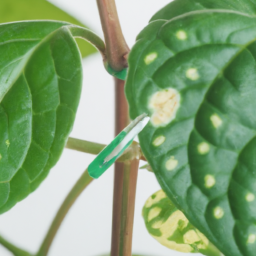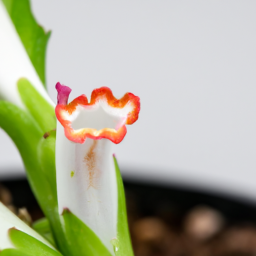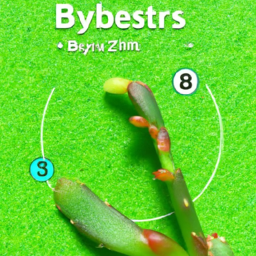
Have you ever wondered how do indoor plants get pollinated? We often think of pollination as a natural process that occurs in the great outdoors, with bees buzzing from flower to flower. But what about our beloved indoor plants? How do they reproduce and thrive without the help of insects or wind? In this blog post, we will explore the fascinating world of indoor plant pollination and uncover the secrets behind their successful reproduction. So, if you’re a plant enthusiast or simply curious about the wonders of nature, keep reading to discover the hidden mechanisms that allow indoor plants to get pollinated.
The Role of Indoor Air Movement in Pollination of Indoor Plants
Indoor plants not only add beauty and freshness to our living spaces but also play a crucial role in maintaining a healthy indoor environment. One of the fascinating aspects of indoor plants is their ability to reproduce through pollination. While outdoor plants rely on insects, birds, and wind for pollination, indoor plants have to rely on other means to ensure successful reproduction. In this article, we will explore the role of indoor air movement in the pollination of indoor plants.
Understanding Pollination
Pollination is the process by which pollen grains are transferred from the male reproductive organ (stamen) to the female reproductive organ (pistil) of a flower. This transfer of pollen is essential for fertilization, which leads to the formation of seeds and fruits. In outdoor environments, various natural agents like insects, birds, and wind aid in the pollination process. However, indoor plants face the challenge of limited access to these agents, making them rely on alternative mechanisms for successful pollination.
Indoor air movement plays a crucial role in facilitating the pollination of indoor plants. While it may not be as powerful as outdoor wind, indoor air movement can still carry pollen grains from one plant to another, ensuring cross-pollination. Let’s delve deeper into the significance of indoor air movement in the pollination process.
The Role of Indoor Air Movement in Pollination
1. Enhanced Pollen Dispersal: Indoor air movement, although less forceful than outdoor wind, can still carry pollen grains over short distances. As indoor plants are typically located in confined spaces, the movement of air generated by fans, air conditioning, or even natural air currents can aid in the dispersal of pollen. This movement helps transfer pollen from the stamen of one plant to the pistil of another, enabling successful fertilization.
2. Promoting Self-Pollination: Some indoor plants are capable of self-pollination, where the pollen from the stamen of a flower is transferred to the pistil of the same flower or another flower on the same plant. Indoor air movement assists in the movement of pollen within the same plant, increasing the chances of self-pollination. This mechanism ensures that indoor plants can reproduce even without external agents like insects or wind.
3. Assisting Cross-Pollination: Cross-pollination, the transfer of pollen between different plants, is vital for genetic diversity and the overall health of indoor plant populations. While outdoor plants rely on insects and wind for cross-pollination, indoor plants heavily depend on indoor air movement to achieve the same outcome. The airflow within indoor spaces, aided by fans or natural ventilation, carries pollen grains from one plant to another, facilitating cross-pollination and ensuring the production of viable seeds.
Optimizing Indoor Air Movement for Pollination
Now that we understand the importance of indoor air movement in the pollination of indoor plants, it’s essential to optimize the conditions for effective pollination. Here are a few tips:
1. Placement of Plants: Position your indoor plants strategically to maximize exposure to indoor air movement. Placing them near windows, fans, or air vents can ensure a steady airflow around the plants, aiding in pollination.
2. Natural Ventilation: Open windows or doors to allow natural air currents to circulate within the indoor space. This natural airflow can carry pollen between plants and promote successful pollination.
3. Use of Fans: If natural ventilation is limited, using fans can create artificial air movement. Place fans strategically to create a gentle breeze that can help disperse pollen grains and facilitate pollination.
4. Hand Pollination: In some cases, indoor plants may require manual intervention for pollination. Using a small brush or cotton swab, gently transfer pollen from the stamen to the pistil of flowers, mimicking the natural pollination process.
By optimizing indoor air movement and creating favorable conditions for pollination, you can ensure the successful reproduction of your indoor plants, leading to healthy growth and vibrant blooms.
In conclusion, indoor plants rely on indoor air movement for pollination due to limited access to natural pollinators. Understanding the significance of indoor air movement in facilitating pollination is essential for indoor plant enthusiasts. By optimizing air movement and creating suitable conditions, we can ensure the successful reproduction of indoor plants, contributing to a greener and healthier indoor environment.

Understanding the Mechanisms of Self-Pollination in Indoor Plant Species
Indoor plants not only beautify our living spaces but also play a crucial role in maintaining a healthy environment. While outdoor plants rely on natural factors like wind, insects, and birds for pollination, indoor plants have to rely on self-pollination mechanisms to reproduce. In this article, we will explore the fascinating ways in which indoor plants ensure their own pollination, ensuring their continued survival and growth.
1. The Structure of Indoor Plants
Before delving into the mechanisms of self-pollination, it is essential to understand the structure of indoor plants. Most indoor plants possess both male and female reproductive organs, making them capable of self-pollination. These reproductive organs, known as stamens and pistils, are located within the flowers of the plant.
The stamen consists of the anther, which produces pollen, and the filament, which supports the anther. On the other hand, the pistil comprises the stigma, style, and ovary. The stigma is sticky and captures pollen, while the style connects the stigma to the ovary, which contains the ovules.
Understanding the structure of indoor plants is crucial as it lays the foundation for comprehending the self-pollination mechanisms they employ.
2. Self-Pollination Mechanisms
Indoor plants have evolved various mechanisms to ensure self-pollination. Let’s explore three of the most common mechanisms:
2.1. Cleistogamy
Cleistogamy is a self-pollination mechanism observed in many indoor plant species. In this mechanism, the flowers remain closed, preventing cross-pollination. The anthers release pollen, which directly falls onto the stigma within the closed flower. This ensures that the plant’s own pollen fertilizes its ovules, leading to self-pollination.
This mechanism is particularly advantageous for indoor plants as it reduces their reliance on external factors for pollination. It allows them to reproduce even in the absence of pollinators or when grown in enclosed spaces.
2.2. Homogamy
Homogamy is another self-pollination mechanism commonly observed in indoor plants. In this mechanism, the flowers of a plant possess both male and female reproductive organs, and they mature at the same time. This synchrony ensures that the pollen from the anthers is released when the stigma is receptive, promoting self-pollination.
Homogamy is advantageous for indoor plants as it increases the chances of successful pollination. By maturing their reproductive organs simultaneously, indoor plants eliminate the need for external agents to transfer pollen, ensuring a higher rate of self-pollination.
2.3. Autogamy
Autogamy is a self-pollination mechanism where pollen is transferred from the anther to the stigma within the same flower. In some indoor plant species, the anther and stigma are positioned closely, allowing for easy pollen transfer.
Autogamy is beneficial for indoor plants as it guarantees a reliable method of pollination. By relying on themselves for pollination, indoor plants can reproduce efficiently even in the absence of external factors like wind or insects.
3. Advantages and Disadvantages of Self-Pollination
Self-pollination offers several advantages and disadvantages for indoor plants. Let’s explore them in detail:
Advantages:
- Reliability: Self-pollination ensures that indoor plants can reproduce even in the absence of external pollinators, providing a reliable method of reproduction.
- Efficiency: By relying on self-pollination, indoor plants can efficiently transfer pollen and fertilize their ovules, leading to a higher success rate of reproduction.
- Conservation of Traits: Self-pollination allows indoor plants to preserve their desirable traits over generations, ensuring the perpetuation of specific characteristics.
Disadvantages:
- Lack of Genetic Diversity: Self-pollination can lead to a reduction in genetic diversity within indoor plant populations. This can make them more susceptible to diseases and environmental changes.
- Accumulation of Harmful Mutations: Continuous self-pollination can result in the accumulation of harmful mutations, potentially reducing the overall fitness of indoor plant species.
Despite the disadvantages, self-pollination is a crucial mechanism for indoor plants to ensure their survival and reproduction in indoor environments.
Conclusion
Understanding the mechanisms of self-pollination in indoor plant species is essential for plant enthusiasts and indoor gardeners. By comprehending how indoor plants reproduce, we can provide them with the necessary conditions to thrive and continue beautifying our indoor spaces. The self-pollination mechanisms of cleistogamy, homogamy, and autogamy ensure the successful reproduction of indoor plants, allowing them to adapt and survive in indoor environments.

Techniques for Hand Pollination of Indoor Plants: A Step-by-Step Guide
Indoor plants not only add beauty to our homes but also provide a breath of fresh air. However, unlike outdoor plants that rely on natural pollinators like bees and butterflies, indoor plants often need a little help to get pollinated. In this step-by-step guide, we will explore the techniques for hand pollination of indoor plants, ensuring their successful reproduction and growth.
Understanding Indoor Plant Pollination
Before diving into the techniques, it’s important to understand how indoor plant pollination works. Unlike outdoor plants that benefit from wind and insects for pollination, indoor plants rely on human intervention. Hand pollination is the process of transferring pollen from the male reproductive organ (stamen) to the female reproductive organ (pistil) of a flower. This ensures the transfer of genetic material, leading to the formation of seeds or fruits.
Hand pollination is particularly important for indoor plants because they lack the natural pollinators found in outdoor environments. By manually transferring pollen, we can mimic the role of bees and other insects, ensuring the successful reproduction of our indoor plants.
Step 1: Identify the Reproductive Organs
The first step in hand pollination is to identify the reproductive organs of the plant. Most indoor plants have flowers with both male and female parts. The stamen, typically located in the center of the flower, produces pollen. The pistil, on the other hand, is usually found in the center of the flower and has a sticky stigma at its top, which is where the pollen needs to be transferred.
Take a close look at the flower and identify these key parts. It’s essential to know which part is the stamen and which is the pistil before proceeding with hand pollination.
Step 2: Collecting Pollen
Once you have identified the reproductive organs, the next step is to collect pollen from the stamen. Gently touch the stamen with a soft brush or cotton swab, ensuring that the pollen sticks to the brush or swab. Be careful not to damage the flower or remove all of the pollen, as this can hinder the plant’s ability to reproduce.
Alternatively, you can also gently tap the flower to release the pollen onto a clean surface, such as a piece of paper or a small container. This method is particularly useful for plants with easily detachable pollen.
Step 3: Transferring Pollen
Now that you have collected the pollen, it’s time to transfer it to the pistil. Gently touch the sticky stigma at the top of the pistil with the brush or cotton swab containing the pollen. Make sure to brush the stigma thoroughly to ensure effective pollination.
For plants with multiple flowers, repeat this process for each flower to maximize the chances of successful pollination. Remember to use a clean brush or swab for each flower to prevent the transfer of unwanted substances or pathogens.
Step 4: Ensuring Pollination Success
After transferring the pollen, it’s important to take steps to ensure the success of pollination. One way to do this is by gently covering the pollinated flower with a small, breathable bag. This will protect the flower from external factors and prevent accidental cross-pollination with other plants.
Additionally, providing optimal growing conditions such as proper lighting, temperature, and humidity can significantly increase the chances of successful pollination. Regularly monitor the plant’s progress and make any necessary adjustments to create an environment conducive to growth.
Remember that not all indoor plants require hand pollination. Some plants may self-pollinate, while others may not produce flowers at all. It’s important to research the specific needs of your indoor plant to determine if hand pollination is necessary.
In conclusion, hand pollination is a crucial technique for ensuring the successful reproduction of indoor plants. By understanding the reproductive organs, collecting and transferring pollen, and providing optimal growing conditions, we can mimic the role of natural pollinators and help our indoor plants thrive. So, grab a brush or cotton swab, and let’s get pollinating!
Key Takeaways of this article
Indoor plants can bring a touch of nature and beauty to any space, but have you ever wondered how they reproduce without the help of outdoor insects and birds? Well, let’s dive into the fascinating world of indoor plant pollination!
Unlike their outdoor counterparts, indoor plants rely on us, humans, to ensure their reproduction. Most indoor plants are not self-pollinating, meaning they need a little assistance to transfer pollen from the male to the female parts of their flowers. One way this can be achieved is through hand pollination, where you can use a small brush or cotton swab to gently transfer pollen from one flower to another. This mimics the role of insects or birds in the wild, ensuring that pollen reaches the right destination. Another option is to gently shake the plant, which can help release the pollen and increase the chances of successful pollination. So, the next time you see your indoor plant blooming, consider playing matchmaker and help them find their perfect pollination partner!
Your Questions Answered. Comprehensive FAQ:
Q1: How do indoor plants get pollinated?
A1: Indoor plants can be pollinated through natural methods such as wind, insects, or self-pollination. While indoor environments may lack the presence of natural pollinators like bees or butterflies, plants can still rely on air currents within the house to carry pollen from the male to the female parts of the flowers. Some plants have evolved to self-pollinate, meaning they can fertilize themselves without external assistance.
Q2: Can indoor plants be pollinated by hand?
A2: Absolutely! Hand pollination is a common method used by indoor gardeners to ensure successful pollination. To manually pollinate an indoor plant, you can gently transfer pollen from the male stamen to the female pistil using a small brush or cotton swab. This mimics the role of insects or wind in transferring pollen and helps in fertilizing the plant.
Q3: Do indoor plants require pollination to produce fruits or seeds?
A3: Not all indoor plants require pollination to produce fruits or seeds. Some plants, known as self-pollinating or self-fertile plants, can produce fruits and seeds without external pollination. These plants have both male and female reproductive organs within the same flower, allowing them to self-fertilize. However, pollination can enhance the quality and quantity of fruits and seeds in many indoor plants.
Q4: What are some common indoor plants that require pollination?
A4: Many popular indoor plants, such as tomatoes, peppers, cucumbers, and strawberries, require pollination to produce fruits. These plants typically have separate male and female flowers, and pollination is necessary for the transfer of pollen from the male flowers to the female flowers. Other indoor plants, like certain orchid varieties, also rely on pollination for seed production.
Q5: What can I do to encourage pollination in my indoor plants?
A5: To encourage pollination in your indoor plants, you can try a few simple techniques. Firstly, gently shaking the plants can simulate the movement caused by wind, helping to dislodge and spread pollen. You can also place a small fan near your plants to create air circulation. If you have multiple plants of the same species, keeping them close together can increase the chances of cross-pollination. Additionally, introducing a small, gentle brush or cotton swab to transfer pollen between flowers can aid in hand pollination.

James Wong is a renowned ethnobotanist, plant scientist, and local television presenter. With a passion for demystifying plant science, he is known for translating complex botanical concepts into practical advice for everyday plant enthusiasts. James’s expertise spans from traditional gardening to cutting-edge plant technologies, making his insights accessible and informative.


